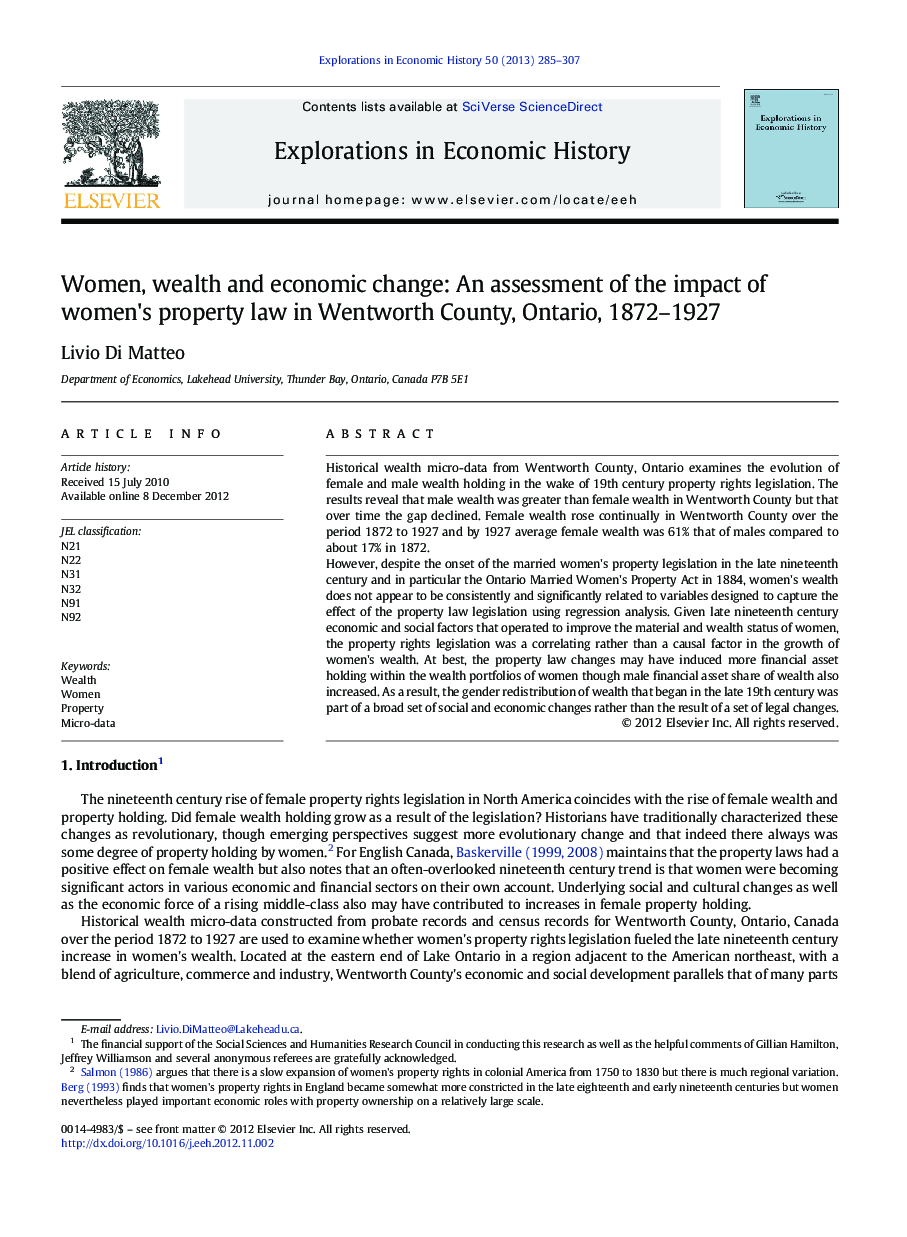| Article ID | Journal | Published Year | Pages | File Type |
|---|---|---|---|---|
| 5068855 | Explorations in Economic History | 2013 | 23 Pages |
Abstract
However, despite the onset of the married women's property legislation in the late nineteenth century and in particular the Ontario Married Women's Property Act in 1884, women's wealth does not appear to be consistently and significantly related to variables designed to capture the effect of the property law legislation using regression analysis. Given late nineteenth century economic and social factors that operated to improve the material and wealth status of women, the property rights legislation was a correlating rather than a causal factor in the growth of women's wealth. At best, the property law changes may have induced more financial asset holding within the wealth portfolios of women though male financial asset share of wealth also increased. As a result, the gender redistribution of wealth that began in the late 19th century was part of a broad set of social and economic changes rather than the result of a set of legal changes.
Related Topics
Social Sciences and Humanities
Arts and Humanities
History
Authors
Livio Di Matteo,
